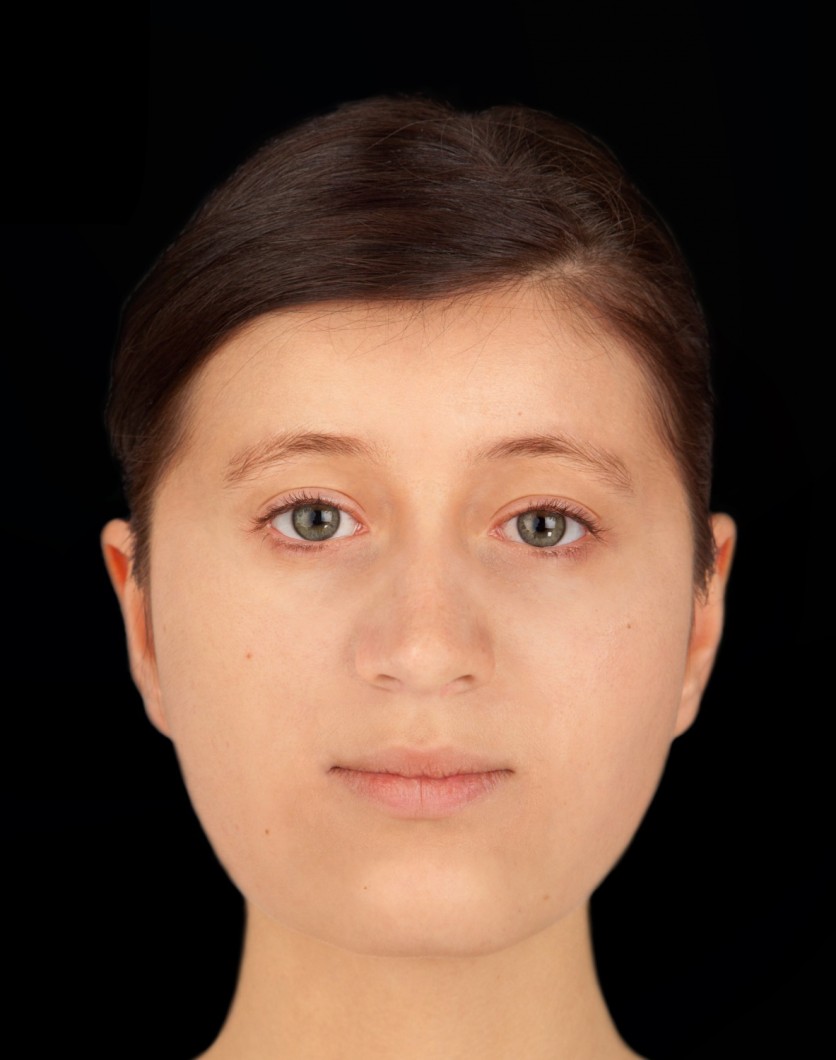A remarkable archaeological discovery near Cambridge, UK, has unveiled the face of a 7th-century Anglo-Saxon woman who was buried with a rare gold and garnet cross, known as the "Trumpington Cross."
The image, reconstructed from her skull, will be publicly displayed for the first time on June 21. Alongside the unveiling of the facial reconstruction, the Museum of Archaeology and Anthropology (MAA) in Cambridge will showcase artifacts from her burial site in a new exhibition titled "Beneath Our Feet: Archaeology of the Cambridge Region," running from June 21 to April 14, 2024.

Reconstructing the Woman's Face
The lifelike likeness of the young woman was created by forensic artist Hew Morrison, who utilized measurements of her skull and tissue depth data specific to Caucasian females.
Although the exact color of her eyes and hair could not be determined without DNA analysis, the reconstructed image provides a remarkable glimpse into her appearance during her final days.
Notably, her left eye was slightly lower than her right, adding a unique feature to her visage. Hew Morrison expressed his fascination with the process, stating, "It was interesting to see her face developing. Her left eye was slightly lower, about half a centimeter, than her right eye. This would have been quite noticeable in life."
The mystery surrounding this enigmatic figure deepens as new scientific evidence emerges. Bioarchaeologists Dr. Sam Leggett, Dr. Alice Rose, and archaeologist Dr. Emma Brownlee conducted an isotopic analysis of the woman's bones and teeth, revealing that she migrated to England from a location near the Alps, possibly southern Germany when she was just seven years old.
Upon her arrival in England, the young woman's diet underwent a significant change, as indicated by a decrease in protein consumption. This transformation in her nutritional intake occurred shortly before her untimely demise, suggesting that her time in England was tragically brief.
Dr. Leggett, currently affiliated with the University of Edinburgh, commented on the challenging journey the young girl undertook, stating, "She was quite a young girl when she moved, likely from part of southern Germany, close to the Alps, to a very flat part of England."
"She was probably quite unwell, and she traveled a long way to somewhere completely unfamiliar-even the food was different. It must have been scary."
Read Also : 3,000-Year-Old Mummy Uncovered at Lima Trash Dump Site; What Does it Say About Ancient Peru?
Rare Bed Burial
The burial site of this woman, discovered in 2012 by the Cambridge Archaeological Unit at Trumpington Meadows, unveiled several significant findings. Her burial, a rare bed burial, was accompanied by the intricate Trumpington Cross, gold pins, and exquisite clothing.
Only 18-bed burials have been unearthed in the UK, and the Trumpington Cross, crafted from gold and garnets, is one of only five of its kind found in Britain.
The upcoming exhibition at the MAA will allow visitors to admire the Trumpington Cross alongside delicate gold and garnet pins connected by a gold chain found near the woman's neck.
These pins likely secured a long veil to her outer garment, adding an element of elegance to her attire.
The unveiling of the facial reconstruction and the exhibition itself mark significant milestones in uncovering the lives of individuals who inhabited Cambridgeshire centuries ago.
The Trumpington bed burial continues to captivate researchers and offers valuable insights into the early medieval period, further enriching our understanding of history.
Related Article : Archaeologists Find Precious Gems that Ancient Romans Lost in Bathhouses

![Apple Watch Series 10 [GPS 42mm]](https://d.techtimes.com/en/full/453899/apple-watch-series-10-gps-42mm.jpg?w=184&h=103&f=9fb3c2ea2db928c663d1d2eadbcb3e52)



